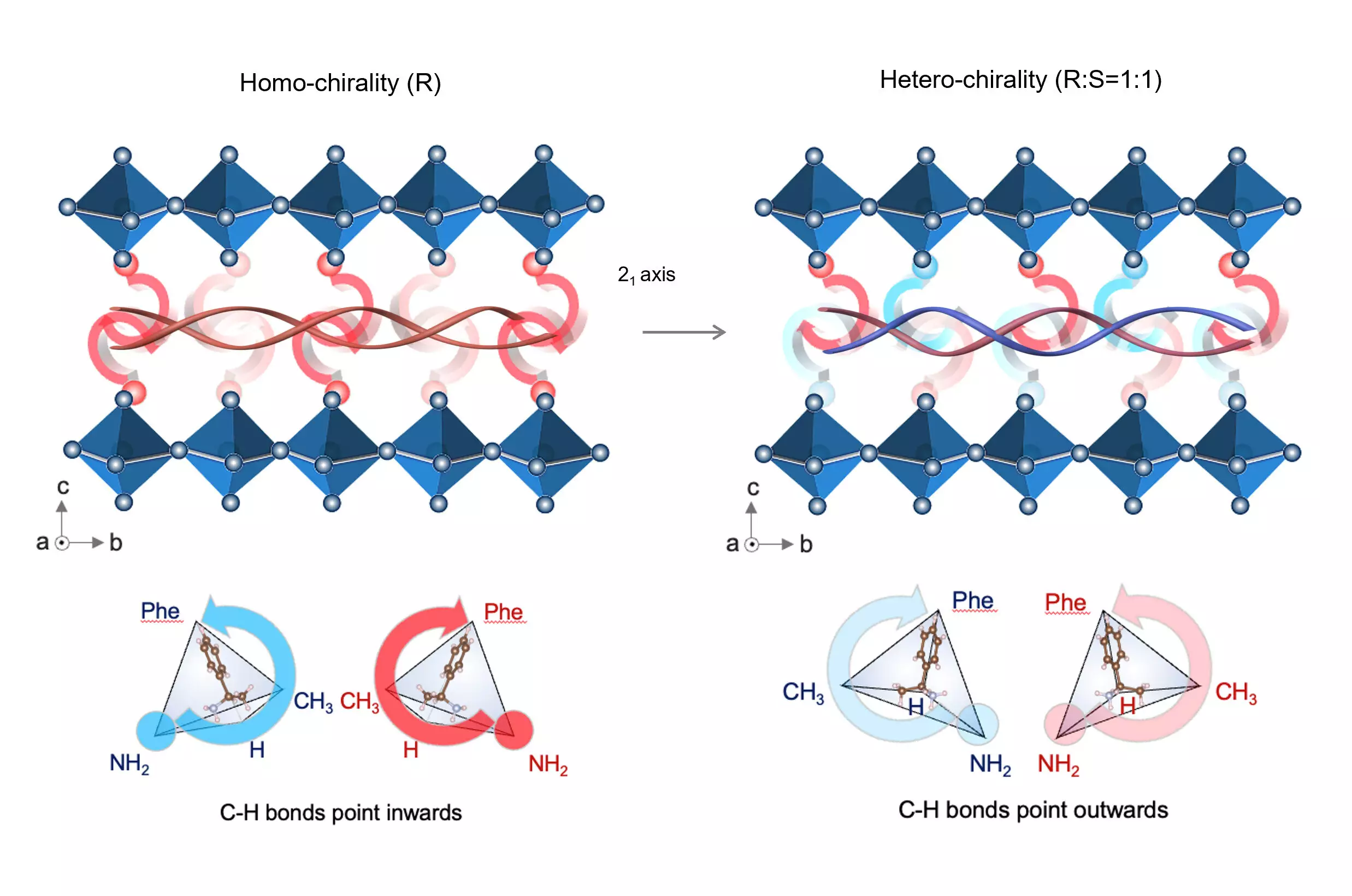The race towards sustainable energy solutions has reached a critical juncture with the development of chiral-structured interfaces in perovskite solar cells (PSCs). A groundbreaking study from a dedicated team at the Hong Kong University of Science and Technology (HKUST) could very well redefine the landscape of solar energy. The research, which has been published in the esteemed journal *Science*, marks a pivotal advancement in both the reliability and efficiency of PSCs, ultimately propelling them closer to widespread commercialization.
Traditional silicon solar cells have long dominated the renewable energy market, largely due to their established manufacturing processes and proven efficacy. However, these cells come with a high price tag—both literally and figuratively. The production processes are often complex, requiring high temperatures and vacuums, making them more costly. In contrast, perovskite materials offer a more affordable alternative with their straightforward manufacturing techniques and cost-effective materials. PSCs can be formed into thin films through simple printing techniques, representing a significant evolution in solar technology.
Overcoming the Stability Challenge
Despite the rapid development towards superior efficiency in PSCs, several significant hurdles remain, particularly concerning their stability and robustness in real-world applications. Historically, PSCs have struggled with inadequate adhesion between layers, which leads to reliability issues and diminished performance over time. This duality of promise and peril has impeded the path to market, but certainly not for long.
Inspired by the exemplary mechanical properties of natural chiral materials, Professor Zhou Yuanyuan and his team at HKUST embarked on a mission to create an unprecedented chiral-structured interface for their solar cells. By implementing R-/S-methylbenzyl-ammonium-based interlayers between the crucial components of the cells, they have engineered a robust and elastic heterointerface. The outcome? Remarkably enhanced durability and operational versatility.
In rigorous testing, the encapsulated solar cells upheld an impressive 92% of their initial power conversion efficiency even after enduring 1,200 hours of extreme temperature variations—from -40°C to 85°C. This level of resilience is a game-changer, especially when evaluated against the stringent International Electrotechnical Commission (IEC) 61215 solar cell standards.
Chiral Materials: Nature’s Mechanical Marvels
The inspiration behind this breakthrough stems from the peculiar mechanical attributes of chiral materials, characterized by their helical arrangement. Just as the tightly wound coils of a spring provide elasticity and durability, the chiral-structured interlayers replicate this impressive structural strength within the solar cells. This innovation enables the PSCs to be not only more mechanically sound but also adaptable.
Dr. Duan Tianwei, a key contributor to this pioneering research, remarked on the significance of introducing a chiral-structured interlayer—the development suggests a new dawn for PSC commercialization. She confidently stated that overcoming reliability issues with these solar cells could unlock access to colossal energy markets. With such high efficiencies, this advancement positions PSCs as a feasible competitor in the renewable energy market.
The Future of Solar Energy
The implications of this research extend far beyond mere efficiency numbers. Enhanced reliability promises that future perovskite solar panels will perform consistently across diverse environmental challenges, ensuring sustained electricity generation. The potential reach of this technology is staggering, possibly enabling billions in energy markets to transition to this more sustainable form of energy.
The collaboration in this research extends elegantly to esteemed institutions like the US National Renewable Energy Laboratory, Hong Kong Baptist University, and Yale University, indicating a collective commitment toward a common goal: harnessing the power of solar energy to suit our growing energy demands.
Ultimately, the advances pioneered by the HKUST research team jauntily underscore the exciting potential that lies within the realm of renewable solar technologies. The straightforward manufacturing and higher efficiency of perovskites, combined with innovative strategies like chiral-structured interfaces, could well position these solar cells at the forefront of global energy solutions. It’s a thrilling time for solar technology, stirring the imagination about what the future holds for energy sustainability.

